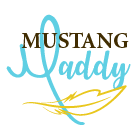AVOIDING THE ULTIMATE FAILURE
A MAGICAL NEW ARENA
I walked into the magical new arena I would be calling home for the next 2 weeks: A full stadium overlooking a large pool where a pod of bottlenose dolphins were playing. I tried to listen to my instructor as she went over the outline of the class, but found myself constantly distracted by the dolphins jumping, splashing, smiling, and whistling in their playtime.
The trainer then threw some enrichment toys into the pool, including a floating foam mat. One of the dolphins leaps out of the pool and dives onto the mat, making a huge splash and effectively distracting the rest of my classmates as well. The dolphin sat floating on the mat for a minute before jumping off, allowing another dolphin to take her turn on the novel and majestic new play toy. As fellow students “oohed and awed,” they got closer to the tank.
“Seeing how the play could get rough and out of hand, our instructor cautioned us to back off. “Does anyone know why I asked you to back away from the pool?” Asked the instructor, rhetorically. “Because by being so close, you were reinforcing the behavior.”
Powerful Meaning
If I had to sum up my entire dolphin training experience into one single moment, this would be it. It happened in the first 10 minutes of my class time, yet it took me the whole 2 weeks to fully grasp its powerful meaning.
Let me explain.
- Positive reinforcement is a form of training that rewards the animal by the ADDITION of an APPETITIVE stimulus (Something the animal wants to acquire, i.e. carrot).
- Negative reinforcement is a form of training that rewards the animal by the SUBTRACTION of an AVERSIVE stimulus (Something the animal wants to avoid, i.e. the stick).
This difference has a huge impact on how the horse views the training session and the trainer. If you are using negative reinforcement, the horse performs to avoid something he doesn’t want, rather than to acquire something he does want.
“Using negative reinforcement in a refined way can certainly lead to a horse tolerating his job and perhaps even finding some aspects of it enjoyable. But using positive reinforcement leads to horses LOVING their job.”
What does this all mean? Well, originally it’s the food that is reinforcing in positive reinforcement training. But then it becomes the click (or whatever bridge signal you choose to use, such as the whistle for the dolphins). Then it’s the entire training session that becomes reinforcing. And finally, it’s YOU that becomes reinforcing. Even your presence is reinforcing to the horse.
The day that the students gathered around the dolphins to watch their increasingly dangerous game of mat diving taught this lesson. Just the presence of the humans near the dolphins was enough to encourage the game to new heights. The presence of humans was reinforcing in and of itself.
Empowering Sessions
Day after day, I watched the dolphins eagerly seek out their trainer, impatiently await their chance to perform tricks, and quite literally shining from their empowering sessions. There was no way I could go back home to training horses without this magical new tool. Ultimately, I wanted the same for my horses: For them to love training, not just merely tolerate it.
My teachers at the Dolphin Training Academy said this: “If it’s reinforcing for you to leave and for behaviors to end, you’ve failed.”
This simple yet powerful statement completely turned conventional forms of horse training and natural horsemanship on their head. I had always assumed that the most reinforcing reward you could give your horse is ending the ride or giving them a break. I had never questioned the underlying assumption that for this to be effective, it means the training is aversive; it’s something they want a way out of rather than acquiring more of!
On A Mission
My horses used to tolerate our time together. Now, after introducing positive reinforcement, I’ve had to introduce some serious gate manners because EVERYONE wants to come train. I put one away and he wants right back out into the arena. They can’t get enough of it!
My mission is to now share what I have learned (and continue to learn) with others, in hopes that people like you can not only transform the relationship they have with their horses, but the relationship they have with others and the world around them.
Using positive reinforcement will at first apply only to horses. But then you won’t be able to stop yourself from experimenting with people too, seeing its success. You may decide to use gratitude when your partner does something desirable rather than nag them for all the times they fail. You may choose to reward your child for his small efforts rather than yell at him for all he does wrong. You may choose to focus on the good in your life rather than the bad. And you may choose to transform your life and the way you see the world around you, all from picking up the carrot and putting down the stick.

